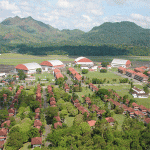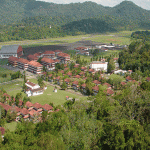While Panama has recently seen an increase in tourism, as reflected in hotel occupation rates, it still lags behind its northwesterly neighbor Costa Rica in attracting eco-tourists. This is surprising given Panama’s unique geographic location, high levels of biodiversity, and longstanding relationship with the United States. In addition to this, Panama is home to one of the most important biodiversity research institutes, the Smithsonian Tropical Research Institute, as well as a state of the art biodiversity museum that is slated to open in the next few years.
While deforestation in Panama has impeded the growth of the eco-tourism industry in the country, this is no reason to discount the importance of eco-tourism in protecting natural resources and biodiversity in Panama
The Panama Investor Blog recently discussed some of this disparity in these tourism trends in an entry comparing Panama and Costa Rica. The author outlines two very different growth strategies for the countries. Since the 1980s Costa Rica has focused on making themselves one of the premier eco-tourist destinations in the world, and as a result the majority of hotels in Costa Rica cater to this market.
Panama on the other hand struggled with the corrupt Noriega government through the 1980s, and has since been trying to leverage their place as an international crossroads for trade over the past decade and a half. As a result Panama has seen rapid growth in Panama City, with the majority of hotels being built in and around urban areas. In this regard Panama has been following a pattern of development similar to Cancun, Mexico, with high rise condominiums and hotels lining the beachfronts. Due to this economic growth Panama has had a more affordable cost of living and an infrastructure that is superior to that of Costa Rica, both factors that the Panama Investor Blog argues outweigh the negative impacts of the environmental degradation and deforestation that has occurred in Panama.
While deforestation in Panama has impeded the growth of the eco-tourism industry in the country, this is no reason to discount the importance of eco-tourism in protecting natural resources and biodiversity in Panama. Panama is in an incredibly unique position as the bridge between two continents, and has a wealth of diversity because of this. It is located on a major migratory flyway, and thousands of birds, unable to cross the Caribbean, are funneled through the region each year. While deforestation may be hampering tourism, it is in no way completely irreversible. With growth unrivaled anywhere else in Latin America, it is even more important for Panama to embrace eco-tourism for its own advantage.
Eco-tourism offers many benefits for a country like Panama. With the current economic downturn in the United States, there is a possibility that the real estate bubble in Panama could potentially lose steam. As a result it may become more difficult to market real estate and property that lacks a unique appeal, and draws comparison to the homogenous hotel district of Cancun. Eco-tourism on the other hand provides an opportunity to diversify real estate assets as well as the tourist services that Panama offers, and provide an experience that is both rewarding and unique for patrons, as well as help to protect Panama’s natural resources. Protecting forested land has many other secondary economic benefits, including the ability to sequester carbon dioxide, which is becoming an increasingly important concern among the international scientific community, as well as the tendency to naturally filter agricultural runoff and pollution (which is listed among the top environmental concerns in the CIA World Factbook).
The sharp contrast between “economic development” and “environmental protection” is often overstated and unnecessary. While it is true that economic forces can lead to environmental destruction, the invisible hand of the market can also be used to help protect natural resources and diversify the tourism options available in Panama. Investors in Panama should realize this before development does become irreversibly out of control, and promote a robust eco-tourism industry in Panama while striving to maintain the strong infrastructure that makes the country so compelling to foreign investors.
Read Full Post »





